The Journal of Biological Regulators and Homeostatic Agents (JBRHA) is a puzzling scientific journal. It published the now-withdrawn bizarre paper on 5G and Coronavirus that caused a lot of commotion (“brouhaha“, meaning commotion or uproar). It is indexed in PubMed, giving it the appearance of a true, National Library of Medicine-approved scientific journal. But the editorial board consists mainly of dead people, the Editor in Chief’s affiliations are unclear, and the content of the journal is mainly empty. We might as well call it the JBRouHAha.
A bizarre paper
As I reported last week, the JBRHA published a widely discussed and now-removed paper claiming that 5G waves can spontaneously generate Coronaviruses in skin cells [retraction notice – archived – PDF]. It was one of the worst papers so far this year, and that is saying something. Because 2020.
What real scientific journal would publish such a bizarre paper? A paper with lots of wild claims, but no data, no proof? Usually, such extraordinary claims are posted on sites like Vixra or predatory publishers because no respectable preprint server or decent scientific journal would even consider to peer review such papers.
In my blog post I already looked a bit into the journal, and I will repeat some of my findings here.
An independent publisher
The JBRHA is published by Biolife, a self-described “independent, academic publisher of innovative, high-quality content” that was founded in 1987. The first JBRHA issue is from a much later date, from January 2006.
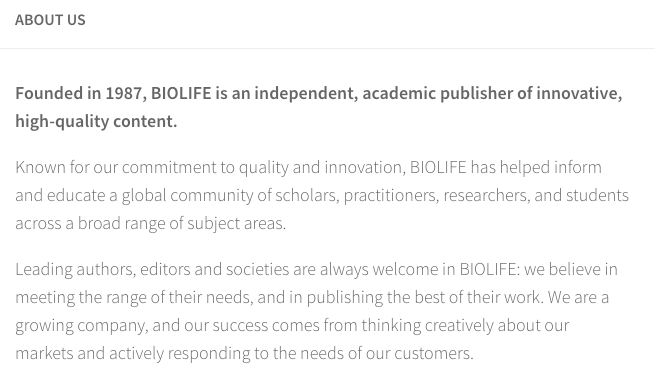
Biolife publishers three other journals, but none of them go back older than 2009.
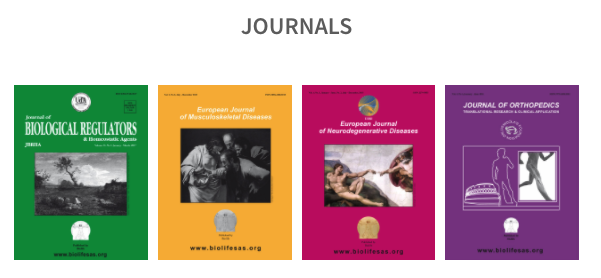
A journal without content
The journal does not appear to have any accessible content. The abstracts of the papers are available in PubMed and on the website of the journal. But for almost all papers, there is no link to a PDF (whether Open Access or behind a paywall). There are no traces of the papers to be found on the internet. And as I mentioned before, you cannot select or copy any text from the website. It is all very bizarre.
Here are some examples of JBRHA papers that only appear to consist of an abstract: Hu XH et al., Ianosi S et al., and Wang HR et al.
It is unclear how anyone can actually access these papers. There is no subscription information. The only option is to order hard copy reprints or ePrints, with a minimum order of 100. Why anyone would want to order 100+ copies of the same PDF is not clear.
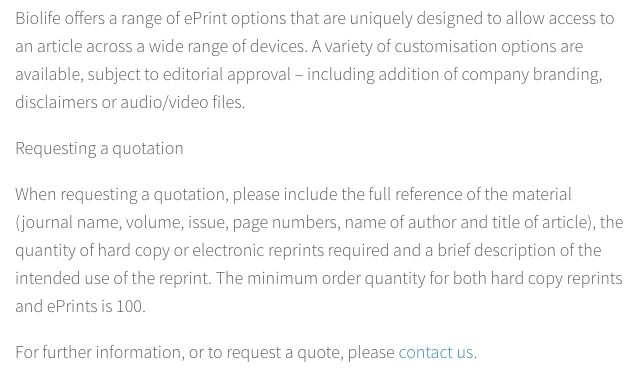
Lack of IRB approval or patient consent
Although most JBRHA papers only appear to consist of an abstract, without any means of downloading the PDF, some papers are available as PDFs, and the now-retracted 5G paper also was, albeit briefly.
Unfortunately, those papers appear to have some issues, mainly because they describe studies on patients or patient-derived material without the appropriate statements that the patients gave consent to participate in the study or that the institutional research board (IRB) approved of the study. Some examples:
Candotto V et al. Drug-induced gingival overgrowth: an in vitro study on cyclosporine and human gingival fibroblasts : describes results obtained from tissues taken from three patients, including an 11-year old child, without consent.
Verdoni F et al. Fibula-pro-tibia transfer with external fixator after tibia fracture with extensive bone defect: a case report – describes the medical history of an adult woman referred to as “girl”, listing her age, date of injury, and hospital of treatment. But no word about if she consented to have her case described.
Abbate GM et al. (2016) – Substance P expression in the gingival tissue after upper third molar extraction: effect of ketoprofen, a preliminary study – 20 adults provided informed consent but there is no mention whether an IRB approved the study.
Similar concerns can be raised about other BioLife publications.
The January 2012 issue of the European Journal of Musculoskeletal Diseases has several papers using human subjects that do not mention IRB approval or patient consent (Migliore A. et al, page 15 or Zar VV et al., page 23).
Editorial ghost board
Most journals proudly feature their Editors and affiliations on their website. But the JBRHA Editorial Board appears to be full of Ghosts of Editors Past (a reference to the Ghost of Christmas Past from the Charles Dickens novel A Christmas Carol).
As I wrote previously, several of the listed Editors appear to be deceased, such as S. Pestka, G. Bonadonna, and V. Bocci. But with only the first initial and last name, and no affiliations listed, it is hard to figure out who actually is sitting on the editorial board.
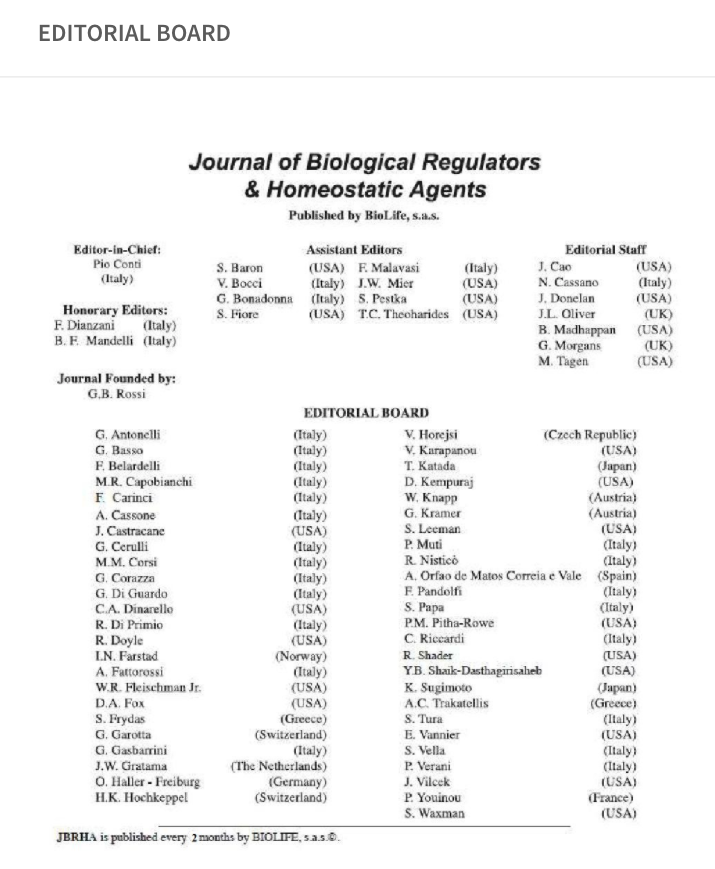
Editor in Chief
Pio Conti is the Editor in Chief of JBRHA. In fact, he appears to be the only person running the journal. If you want to submit a paper, just send him an email and he will personally handle the paper. This is rather unusual for academic journals.

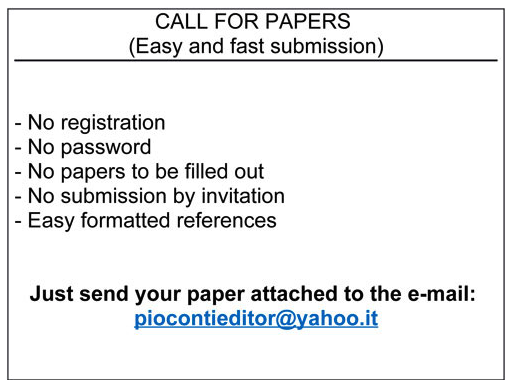
Conti is a professor at the University of Chieti, and although the university does mention him a couple of times in press releases, he does not appear to have a faculty page. He also claims to be an affiliated professor at Tufts University in Boston, although I could not verify this.

Unclear publication fees
It is not clear how much it would cost to publish in the BioLife journals. The “Publication Fees” page does not give any concrete pricing. It has a vague statement saying that “the APC payable for an article is agreed upon during the manuscript submission process” which sounds similar to buying a second hand bicycle or car radio from a drug dealer. The website promises to make the articles visible immediately upon publication, but as I wrote above, this appears to not happen.
With an unclear editorial board consisting of deceased people, one can wonder how much oversight there is in the financial transactions who appear to be handled solely by the Editor in Chief.

Predatory journal or not
The JBRHA journal appears to have many features shared by predatory journals: an unclear / zombie editorial board with no affiliations mentioned, no clear publication fees, no downloadable content, and lack of scientific rigor and ethical requirements. With such questionable practices, it is baffling that the journal is included in PubMed.
Please let me know in the comments below how one can ask PubMed to reconsider indexing JBRHA’s papers.

NCBI says to try:
pubmedcentral@ncbi.nlm.nih.gov
LikeLike
Many years ago I got a manuscript to review, accompanied by an apologetic note from the editor saying that he would not normally review the paper, but the author wouldn’t stop pestering him. It was almost on the level of the 5G paper–I can’t share details, but “not even wrong.” I have never been so glad for anonymity, because I didn’t want to hear from that author!
LikeLike
Interesting. I was an author on a paper published in 1988 in JBRHA, shortly after the journal started. It seemed to be a normal academic journal at that point. I wonder what happened.
The journal has been publishing since 1987 (2987 articles total). See PubMed journal timeline: https://pubmed.ncbi.nlm.nih.gov/?term=journal%20of%20biological%20regulators%20and%20homeostatic%20agents&timeline=expanded
LikeLike
In the PubPeer thread on this paper, a poster asserts that the journal was sold by its original publisher fairly recently, and that older articles have mostly vanished (which your timeline does seem to support–if you ask for only articles with abstract or text availability, most years have nothing). The poster speculates that it was sold to a predatory publisher, and indeed this seems likely.
LikeLike
To your comment about it being baffling how such a journal could appear in PubMed, my guess would be that one of the papers published by the journal received federal funding and that is why the journal is indexed on PubMed. I believe anything funded by the NIH will be automatically indexed on PubMed, which is one of the reasons why many predatory journals highlight on their main pages that they welcome submissions from people with government funding – it is an easy way to give themselves a sense of legitimacy. It is actually not uncommon to find predatory journals that appear on PubMed through this avenue.
LikeLike
Doesn’t that explain on a paper being included in PubMedCentral (PMC), not PubMed? But it might be an explanation.
LikeLike
Qureshirg is completely correct. Being on PubMed is not a big deal if a journal gets there through PubMed Central. However, for this journal there is more. According to the NLM catalog, it is also included in the selective MEDLINE and even in the very selective Index Medicus! (https://www.ncbi.nlm.nih.gov/nlmcatalog?sort=pubdate&term=%22J+Biol+Regul+Homeost+Agents%22%5BTitle+Abbreviation%5D). Could this be a case of a hijacked journal? Or perhaps this was a legit journal that got sold to a bad publisher (a strategy followed for example by OMICS in their attempts to become respectable).
LikeLike
Hi
I had right the same concerns raised to PubMed, Scopus,Web of Science.
For PubMed you can contact nlm-support@nlm.nih.gov
I’m forwarding your post also.
If you direct email me I can send you my “dossier”.
Best
LikeLike
Currenlty “Pio Conti” does not appear to have a position in any italian university (source: https://cercauniversita.cineca.it/, in italian, updated every month or so). Digging into the database, one may argue that he retired during 2013.
LikeLike